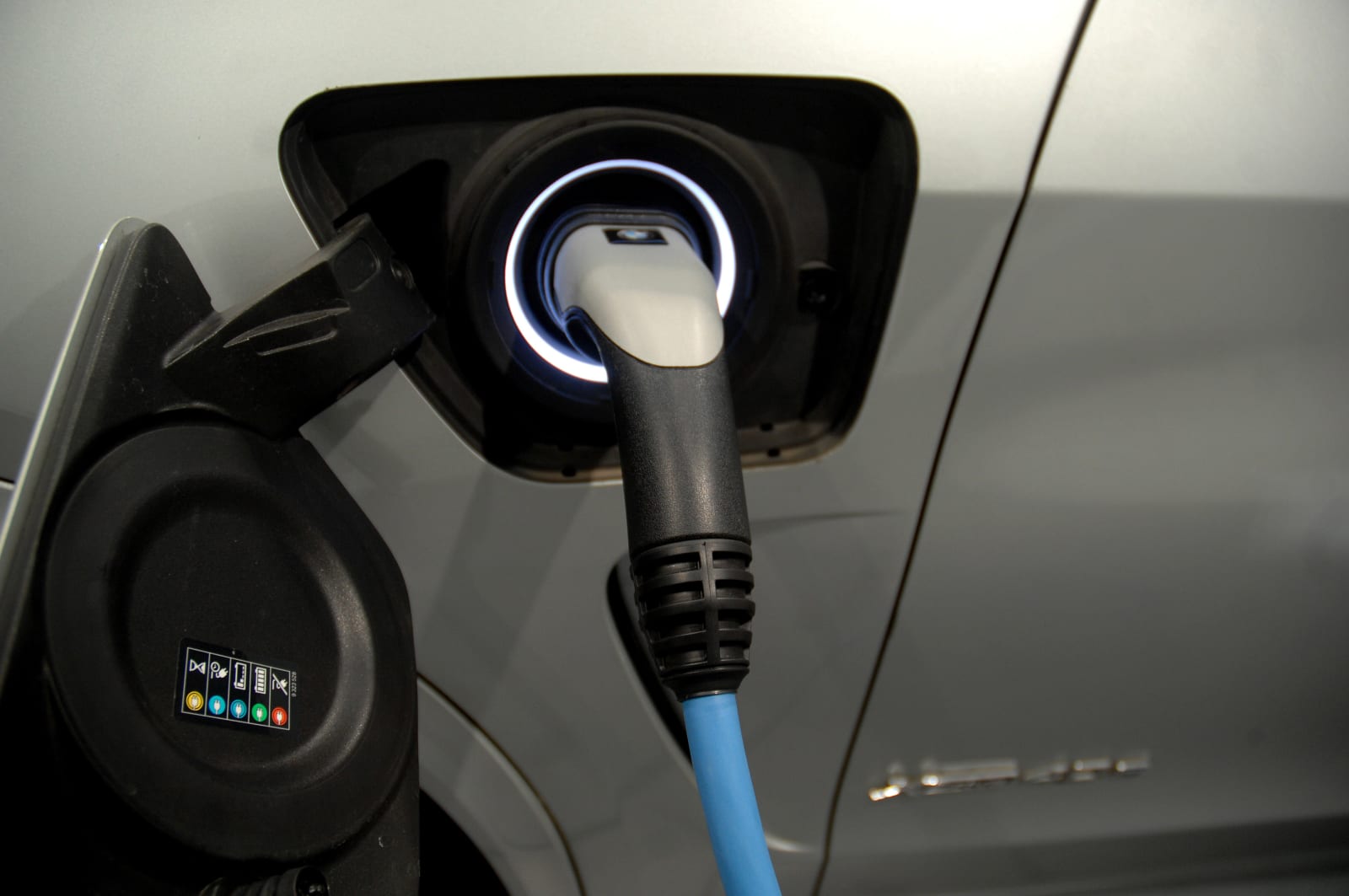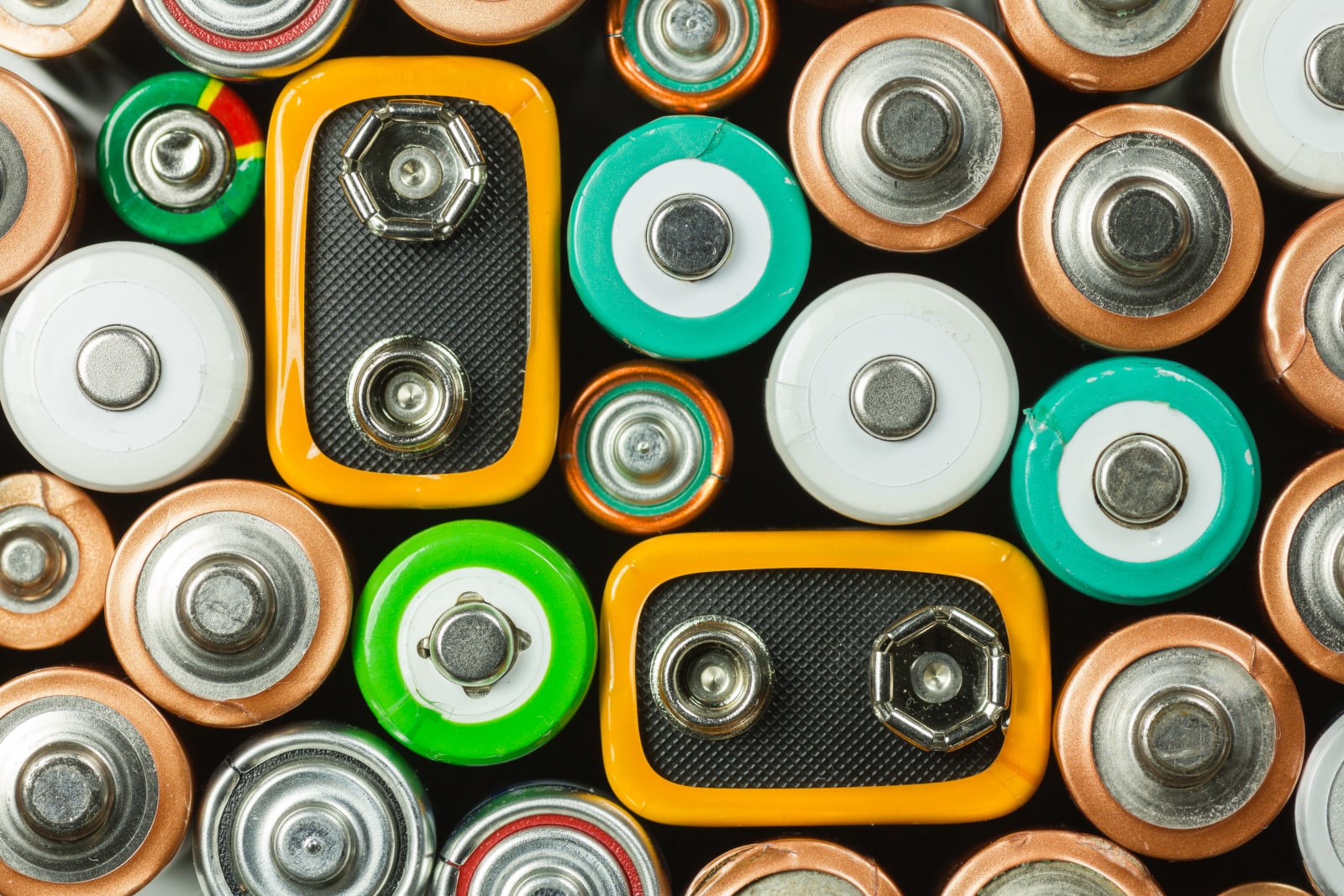Tag Archives: LithiumIonBattery
BMW partnership will develop solid-state EV batteries
 BMW is jumping into the solid-state battery game and it's doing so by teaming up with battery-developer Solid Power. The company is a spin-out from the University of Colorado Boulder and has been developing solid-state rechargeable batteries since 20...
BMW is jumping into the solid-state battery game and it's doing so by teaming up with battery-developer Solid Power. The company is a spin-out from the University of Colorado Boulder and has been developing solid-state rechargeable batteries since 20...
Researchers made a battery out of trash
 Pursuing more efficient sources of renewable energy has led to many iterations of the battery. But researchers just brought a really interesting new version to the table, one made from potassium ions and trash.
Pursuing more efficient sources of renewable energy has led to many iterations of the battery. But researchers just brought a really interesting new version to the table, one made from potassium ions and trash.
US Navy bans e-cigarettes on every ship in the fleet
A123 Systems becomes America’s latest EV battery maker to file for bankruptcy
Having been riddled with setbacks, including a major recall of faulty batteries supplied to Fisker Automotive, Michigan's favorite EV battery maker A123 Systems has filed for bankruptcy. It has also announced the sale of its main business units to rival Johnson Controls in a deal pegged at $125 million -- a sad fraction of the billion dollars it raised since it launched in 2001 (not least from government grants). It seems that neither fresh lithium ion innovations nor a potential deal with Chinese investors were able to keep the company out of the red, which leaves A123 on the road to nowhere -- right behind that other DoE-sponsored hopeful, Ener1.
Continue reading A123 Systems becomes America's latest EV battery maker to file for bankruptcy
Filed under: Transportation
A123 Systems becomes America's latest EV battery maker to file for bankruptcy originally appeared on Engadget on Wed, 17 Oct 2012 06:22:00 EDT. Please see our terms for use of feeds.
Permalink Technology Review India, The New York Times |
Technology Review India, The New York Times |  A123 Systems | Email this | Comments
A123 Systems | Email this | Comments NC State nanoflowers can boost battery and solar cell capacity, make great prom accessories
We see a lot of sleek-looking technology pass through our doors, but it's rare that the inventions could be called beautiful by those who aren't immersed in the gadget world. We'd venture that North Carolina State University might have crossed the divide by creating an energy storage technology that's both practical and genuinely pretty. Its technology vaporizes germanium sulfide and cools it into 20-30 nanometer layers that, as they're combined, turn into nanoflowers: elegant structures that might look like the carnation on a prom dress or tuxedo, but are really energy storage cells with much more capacity than traditional cells occupying the same area. The floral patterns could lead to longer-lived supercapacitors and lithium-ion batteries, and the germanium sulfide is both cheap and clean enough that it could lead to very efficient solar cells that are more environmentally responsible. As always, there's no definite timetable for when (and if) NC State's technology might be commercialized -- so call someone's bluff if they promise you a nanoflower bouquet.
Filed under: Science
NC State nanoflowers can boost battery and solar cell capacity, make great prom accessories originally appeared on Engadget on Thu, 11 Oct 2012 20:37:00 EDT. Please see our terms for use of feeds.
Permalink North Carolina State University |
North Carolina State University |  ACS Publications | Email this | Comments
ACS Publications | Email this | Comments Toyota plans dialed-back launch of eQ and iQ EV city cars in December
Toyota's just-arrived RAV4 EV will soon get a much smaller cousin -- albeit a very elusive one. An electric version of the iQ city car will arrive in Japan (as the eQ) and the US (as the iQ EV) this December, but the automaker is significantly scaling back its 2010 promises of several thousand cars sold per year to just 100 fleet-oriented vehicles. The charging times, costs and range of EVs "do not meet society's needs," vice chairman Takeshi Uchiyamada says to explain the smaller ambitions. It's easy to understand the cautious approach after seeing the car's final details. While they're not out of line with the specs of other EVs, the eQ's 3-hour fast charge, 62-mile range and ¥3.6 million ($46,130) price wouldn't have regular customers flocking to dealerships. Most of Toyota's energy is instead being funneled into its tried-and-true hybrids, with 21 due on the market by 2015, as well as plans to deliver the company's first hydrogen fuel cell car by the same year. Eco-conscious drivers may be disappointed that Toyota isn't moving as aggressively into a pure electric realm as some of its rivals, but we'd rather see smartly planned baby steps than an overly risky plunge.
Filed under: Transportation
Toyota plans dialed-back launch of eQ and iQ EV city cars in December originally appeared on Engadget on Mon, 24 Sep 2012 13:17:00 EDT. Please see our terms for use of feeds.
Permalink Reuters |
Reuters |  Toyota (PDF, translated) | Email this | Comments
Toyota (PDF, translated) | Email this | Comments Toyota plans dialed-back launch of eQ and iQ EV city cars in December
Toyota's just-arrived RAV4 EV will soon get a much smaller cousin -- albeit a very elusive one. An electric version of the iQ city car will arrive in Japan (as the eQ) and the US (as the iQ EV) this December, but the automaker is significantly scaling back its 2010 promises of several thousand cars sold per year to just 100 fleet-oriented vehicles. The charging times, costs and range of EVs "do not meet society's needs," vice chairman Takeshi Uchiyamada says to explain the smaller ambitions. It's easy to understand the cautious approach after seeing the car's final details. While they're not out of line with the specs of other EVs, the eQ's 3-hour fast charge, 62-mile range and ¥3.6 million ($46,130) price wouldn't have regular customers flocking to dealerships. Most of Toyota's energy is instead being funneled into its tried-and-true hybrids, with 21 due on the market by 2015, as well as plans to deliver the company's first hydrogen fuel cell car by the same year. Eco-conscious drivers may be disappointed that Toyota isn't moving as aggressively into a pure electric realm as some of its rivals, but we'd rather see smartly planned baby steps than an overly risky plunge.
Filed under: Transportation
Toyota plans dialed-back launch of eQ and iQ EV city cars in December originally appeared on Engadget on Mon, 24 Sep 2012 13:17:00 EDT. Please see our terms for use of feeds.
Permalink Reuters |
Reuters |  Toyota (PDF, translated) | Email this | Comments
Toyota (PDF, translated) | Email this | Comments Editorial: Physics and politics stand in the way of true mobile
Progress is lumpy. The future is attained in a series of epochal strides, each followed by a lot of relatively inconsequential shuffling forward. The invention of the internet (and especially the consumer-friendly web) was a rare giant step that motivated immense adoption of computers and digital lifestyles. A global marketplace of online citizens spawned gadgets, software apps, corporate gold-rushing and other feverish shuffling.
Even with the opulent gadgetry we admire and enjoy, the whole expanding tech bubble seems to be reaching for something beyond itself. The incremental improvements of personal technology don't thrust into the future as much as push against constraining walls of the present. Sharper screens and thinner computers are delightful results of corporate development cycles. But we are tethered to the present, which one day will seem primitive in retrospect, by two unglamorous bridles: power and connectivity.
Continue reading Editorial: Physics and politics stand in the way of true mobile
Editorial: Physics and politics stand in the way of true mobile originally appeared on Engadget on Tue, 04 Sep 2012 09:00:00 EDT. Please see our terms for use of feeds.
Permalink | | Email this | CommentsLG Chem develops very flexible cable batteries, may leave mobile devices tied up in knots
The world is no stranger to flexible batteries, but they've almost always had to be made in thin sheets -- that doesn't amount to a long running time if you're powering anything more than a watch. LG Chem has developed a flexible lithium-ion battery that's not just better-suited to our bigger gadgets but could out-do previous bendable energy packs. Researchers found that coating copper wires with nickel-tin and coiling them briefly around a rod results in a hollow anode that behaves like a very strong spring; mating that anode with a lithium-ion cell leads to a battery that works even when it's twisted up in knots. Join multiple packs together, and devices could have lithium-ion batteries that fit many shapes without compromising on their maximum deliverable power. Some hurdles remain to creating a production-grade battery, such as a tendency for the pack to shed a small amount of capacity whenever it's put under enough stress. LG Chem is fully set on turning these cable batteries into shippable technology, however, and could ultimately produce mobile devices and wearables that really do bend to their owners' every whim.
Filed under: Wearables, Science
LG Chem develops very flexible cable batteries, may leave mobile devices tied up in knots originally appeared on Engadget on Sun, 02 Sep 2012 16:03:00 EDT. Please see our terms for use of feeds.
Permalink | Phys.org | Email this | Comments
Phys.org | Email this | Comments 



